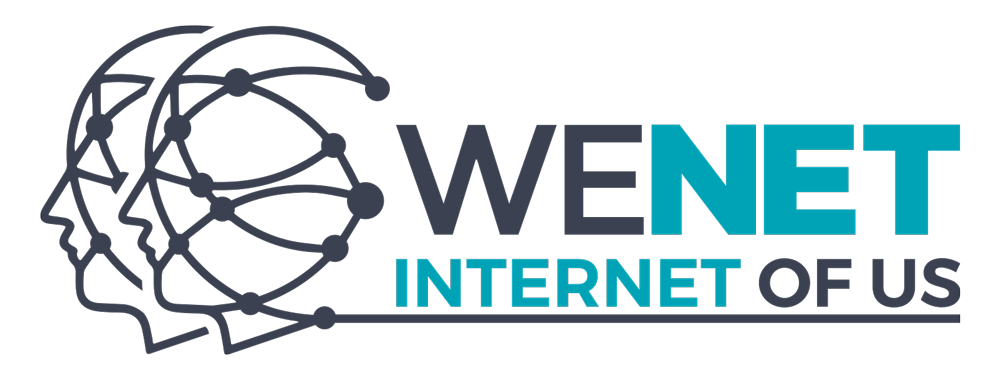Reporting back from WeNet’s Final Event at HHAI
On June 26, WeNet organised its final event in the form of a workshop within the 2nd International Conference on Hybrid Human Artificial Intelligence (HHAI 2023), in Munich, Germany: a perfect match to the project’s focus and the aim of the envisioned workshop, seeking to promote richer and deeper social interactions by enabling the Internet of Us, our envisioned Hybrid Human-Artificial Intelligence online platform.
Based on this core theme, the WeNet workshop, entitled “Diversity-Aware Hybrid Human-Artificial Intelligence (DHHAI)”, was structured as a series of discussions revolving around the multidisciplinary contributions received by the organising partners in response to the call for papers connected to the final event, which explored the key subject from a variety of angles.
In the words of WeNet’s Project Coordinator Fausto Giunchiglia (University of Trento), summing up the event: “The DHHAI workshop featured 11 papers covering various aspects related to the role played by human diversity in hybrid human-machine interactions and machine-mediated social interactions. It was a unique possibility to critically rethink and discuss the main results of the WeNet project. Furthermore, the co-location with the HHAI Conference provided the best possible environment, with interested participants and the possibility to have discussions about AI and its future in general”.
Papers and related presentations can be downloaded from our official DHHAI page
All accepted papers have been published as part of the HHAI workshop proceedings, and, in addition, extended versions of the selected papers have been invited to a special issue of AI Communications, The European Journal on AI, which will revolve around the same theme as the workshop. For more details on the special issue, please visit the dedicated page.

Assessing the results and preparing for the future
Giunchiglia also highlighted another, non-secondary aspect of the DHHAI gathering: “An important outcome of the event was also a concrete plan for how to proceed with the research and the ongoing collaborations after the end of the project.”
This shared intent is echoed by some of the consortium members attending, while offering their take on the final event itself. “The WeNet project has been an enriching experience that utterly changed my outlook on ethics in computer science and technology development,” stated Laura Schelenz (University of Tübingen), who elaborates: “The final event again has underlined the importance of including ethics in all design and governance considerations but also emphasized the great potential of using new methods in computer science to connect humans in different ways. Bringing ethics and innovative technological methods together will remain a challenge for this decade, but we will continue the work based on the foundation that WeNet has laid.”
Amalia de Götzen (Aalborg University), reflecting on WeNet from the design for services and data sovereignty standpoint: “Among our different lines of research, we explore how technology affects the way services can be designed, delivered, and experienced and how current technologies and data practices can support the designer’s practice and complement their toolkit.” Summarising on opportunities and lessons learned, she elaborated: “Within the WeNet project we could engage directly with the users through the pilots in the different universities and raise important ethical questions that informed the application’s design developed with the consortium. Through the pilots, we got an understanding of how diversity could be used and leveraged by the machines, and we better identified what are the critical elements that should be taken into account when designing with this technology. Furthermore, we learnt how a diversity-aware system could be used to support the students in their everyday life, leveraging their diverse community to smoothly navigate a new academic context.”
This was complemented by Lakmal Meegahapola (Idiap Research Institute & EPFL), in relation to their specific work “Our research focus within WeNet was on using mobile sensing technologies and machine learning to understand behaviour and routines. One key aspect that the project has helped us explore is the cross-dataset generalisation of mobile sensing-based machine learning models. The pilots provided us with a unique opportunity to delve into this by leveraging the vast amount of sensor data collected from mobile devices in multiple countries.”
Daniele Miorandi (CEO of U-Hopper), finally offered an SME point of view: “What a ride it was! As a small organisation focussed on taking innovation from the lab to the market, the project represented a massive endeavour. And of course we bumped into a number of issues and obstacles along the road. But it was well worth it: having the opportunity to work with top-notch scientists enabled us to build a competitive advantage in diversity-aware AI. And with all the recent hype about anything related to AI, we think we are now in a sweet spot to move forward, building on the legacy of WeNet to create new solutions for the market. As they say, WeNet is over, long live WeNet!”

WeNet’s work on the spotlight
Beyond the DHHAI workshop, WeNet’s can count another achievement at HHAI: coordinating partner University of Trento saw their work within the project accepted to the main Conference, with their paper “Egocentric Hierarchical Visual Semantics“ – authored by Luca Erculiani, Andrea Bontempelli, Andrea Passerini and Project Coordinator Giunchiglia himself – which also received the conference’s “Best Working Paper” Award.
Here below, the abstract of the paper, which can be read in full in the “Scientific Publications” section of this website.
We are interested in aligning how people think about objects and what machines perceive, meaning by this the fact that object recognition, as performed by a machine, should follow a process which resembles that followed by humans when thinking of an object associated with a certain concept. The ultimate goal is to build systems which can meaningfully interact with their users, describing what they perceive in the users’ own terms. As from the field of Lexical Semantics, humans organize the meaning of words in hierarchies where the meaning of, e.g., a noun, is defined in terms of the meaning of a more general noun, its genus, and of one or more differentiating properties, its differentia. The main tenet of this paper is that object recognition should implement a hierarchical process which follows the hierarchical semantic structure used to define the meaning of words. We achieve this goal by implementing an algorithm which, for any object, recursively recognizes its visual genus and its visual differentia. In other words, the recognition of an object is decomposed in a sequence of steps where the locally relevant visual features are recognized. This paper presents the algorithm and a first evaluation.





